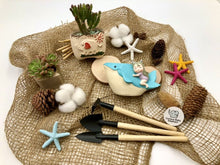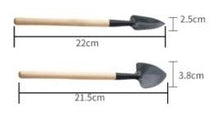Parent & Child Educational Play Time - ‘Learn to Plant & Care for It’:
These few planters have been meticulously chosen to represent the animals that are endangered. It’s also portrays a child playful loving these animals on these planters. This item comes with a pair of kid’s mini gardening tools, plus an e-instruction card that helps your child to learn to plant and care for it.
E-Card Instruction: Steps to plant in a planter / ground
Quantity: Whale & Child Planter 1 piece. Mini gardening tools: 2 pieces.
Sizes: 12.5cm*8cm (planter), 2.5*22, 3.8*21.5 (tools)
Note: Gardening tools usage, with adult supervision.
With every purchase, HKD5 will be donated to the WWF. We will also donate on top of this amount too. Together we can make a difference.
The #SaveTheAnimals Campaign is an-going project to support and increase awareness in saving the lives of these animals and its natural habitat. For every purchase, we give back.
Whales are at the top of the food chain and have an important role in the overall health of the marine environment. Whales play a significant role in capturing carbon from the atmosphere; each great whale sequesters an estimated 33 tons of CO2 on average, thus playing their part in the fight against climate change. Unfortunately, their large size and mythical aura does not protect them; six out of the 13 great whale species are classified as endangered or vulnerable, even after decades of protection. An estimated minimum of 300,000 whales and dolphins are killed each year as a result of fisheries by catch, while others succumb to a myriad of threats including shipping and habitat loss.




